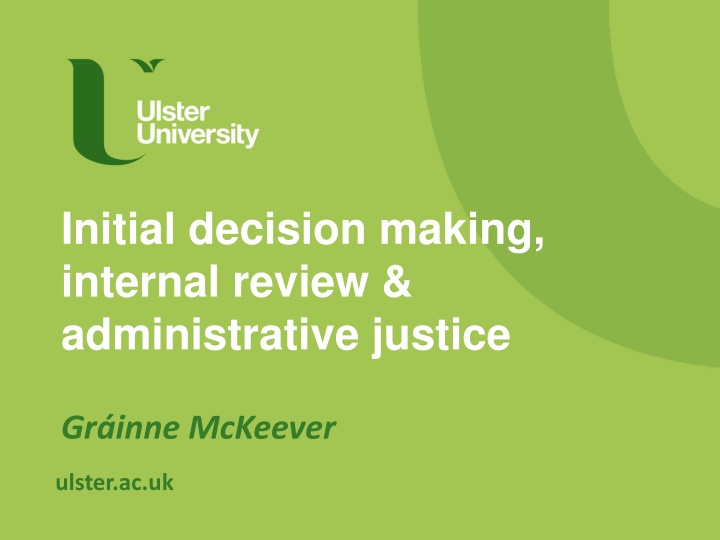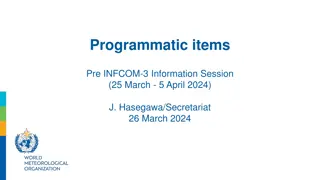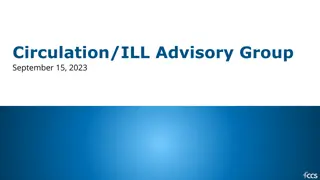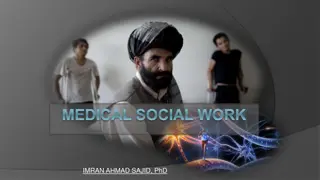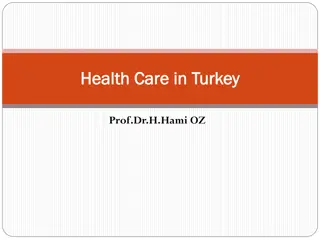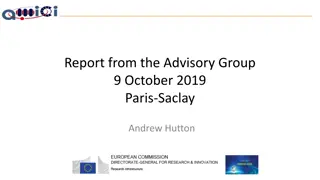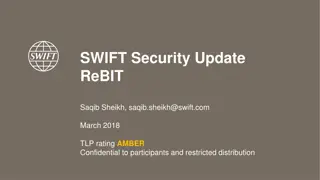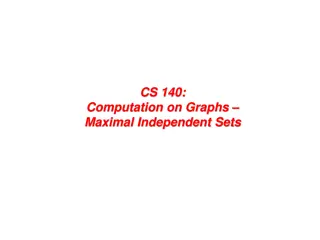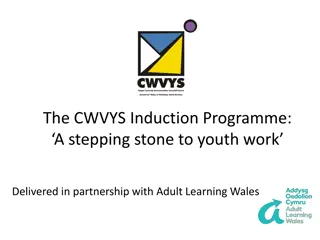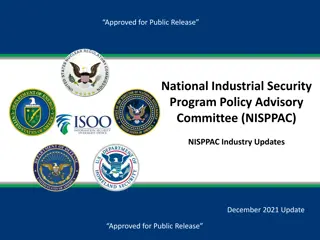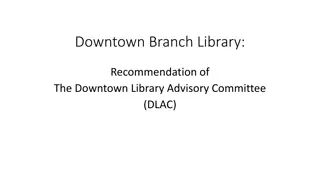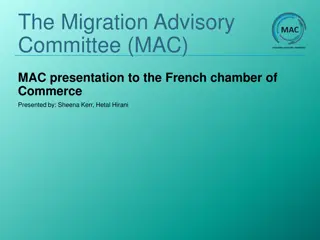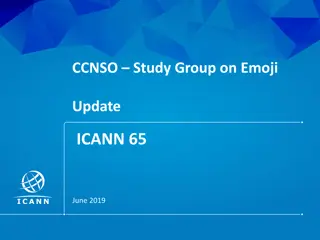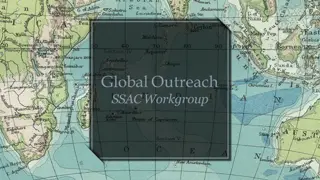Social Security Advisory Committee (SSAC) Role and Independent Work Programme
Established in November 1980, the SSAC is a statutory body providing advice on social security matters. It plays a crucial role in scrutinizing regulations, offering independent advice to ministers, and conducting research through its Independent Work Programme to enhance evidence-based policymaking.
Download Presentation

Please find below an Image/Link to download the presentation.
The content on the website is provided AS IS for your information and personal use only. It may not be sold, licensed, or shared on other websites without obtaining consent from the author.If you encounter any issues during the download, it is possible that the publisher has removed the file from their server.
You are allowed to download the files provided on this website for personal or commercial use, subject to the condition that they are used lawfully. All files are the property of their respective owners.
The content on the website is provided AS IS for your information and personal use only. It may not be sold, licensed, or shared on other websites without obtaining consent from the author.
E N D
Presentation Transcript
Initial decision making, internal review & administrative justice Gr inne McKeever ulster.ac.uk
Social security perspective on internal review & decision making 1. What is the Social Security Advisory Committee (SSAC)? 2. What are we looking at through our Independent Work Programme (IWP)? 3. What are stakeholders and decision-makers telling us about mandatory reconsideration (MR)? 4. My views on whether the process is working as intended
Statutory body, funded by DWP, but independent of Government, the Department and sectional interests; What is the SSAC? Established November 1980, superseding National Insurance Advisory Committee & the Supplementary Benefits Commission Main UK advisory body on social security and related matters
Chair (Paul Gray) and 12 members. Composition Reserved membership for members representing employers; workers; chronically sick or disabled people; Northern Ireland (and, by custom, Wales & Scotland)
SSACs role? Gives advice and assistance to the Secretary of State and the Northern Ireland Department (either at the request of Ministers or under its own initiative); Scrutinises proposals in the form of draft regulations; Have a similar role of scrutiny in relation to regulations in Northern Ireland; will retain the power to scrutinise reserved social security matters for Scotland but not devolved social security matters Has a memorandum of understanding with HMRC regarding benefits they administer
Independent Work Programme SSAC can undertake to provide advice on its own initiative and carry out research to support its IWP in order to: provide an evidence base for our work, improving members ability to scrutinise regulations and provide credible independent advice to ministers add value to the debate on a topic that is of current interest to government or a broad range of our stakeholders stimulate debate or discussion of a specific topic introduce new thinking on data analysis
Decision making & mandatory reconsideration IWP report, focused on: ESA fitness for work decisions (DWP) tax credit awards (HMRC) Consultation from Feb-March 2016. 80+ stakeholder responses Discussions with DWP decision makers & HMRC case workers Report expected June 2016
DWP policy objectives for MR 1. To resolve disputes as early as possible; 2. To reduce unnecessary demand on HMCTS by resolving more disputes internally; 3. To consider revising a decision where appropriate; 4. To provide a full explanation of the decision; and 5. To encourage claimants to identify and provide additional evidence that may affect the decision, so that they can receive the correct decision at the earliest opportunity DWP (2013) Appeals Reform: An Introduction
1. MR Time limits: 28 days Stakeholder responses evidencing difficulties: Knowing about time limits Meeting them (including getting advice w/in time limits) Providing additional evidence on time Getting DMs to wait for new evidence Disputing time limits & securing extensions
2. Communications nature & content Phone-calls difficult for (vulnerable) claimants - reasonable adjustments needed in communications Advisors are not included in communications Electronic communications not used routinely (though HMRC currently trialling this) Calls are overly scripted and general Claimants are receiving misleading info on likely success of MR and appeal
3. Evidence gathering Claim forms are not eliciting the necessary information Lack of specificity in departmental requests for further evidence nothing from stakeholders to suggest that DMs are identifying the evidential gap and specifically directing claimants to fill this gap Undue emphasis placed on getting medical evidence when this may not be appropriate to the claim
4. MR Notices (MRNs) Not clear whether MR has been requested or completed CPAG three stage process Not clear to claimants what the outcome of the MR is judicial evidence that MRNs are poor quality MRNs not clear on further appeal routes and become a barrier to accessing appeal rights
5. DM guidance Extensive (and growing) Accurate and reliable Difficulties in searching and navigating, reducing reliance on guidance and increasing reliance on colleagues knowledge
6. Interpreting (medical) evidence HCP hotline for DMs, but difficult to get through Failures by DMs to explore/clarify inconsistencies b/w HCP reports and other evidence Seen as a missed opportunity to review decisions thoroughly
7. Process issues Claimants having to appeal (with reasons) before seeing HCP evidence used by DMs Judicial recommendation that sanctions (quasi-criminal) should be excluded from MR process, or expedited through to appeal to comply with art.5 ECHR Need for separate MRs on separate decisions that claimant (incorrectly) thinks are one decision & only makes one application for MR
Meeting the policy objectives? 1. Resolve disputes as early as possible: Difficult to know concern from stakeholders that the process was prolonging the resolution of disputes and creating a barrier to accessing justice DWP Claimant Experience Survey 2014/15 found that ESA appeal process was perceived to be a lengthy, complex, and error-prone process, involving staff who were not always equipped with the knowledge required
Meeting the policy objectives? 2. Reduce demand on HMCTS R Thomas: important work on tribunal trends, with current downward trajectory. Appeals against ESA decisions decreased by 86% in July to September 2014 compared to the same quarter in 2013. Marked decline across other DWP benefits subject to MR but no similar decline in Housing Benefit/Council Tax Reduction, which have not been subject to MR Meets the objective but concern that appeal rights are not being accessed
Meeting the policy objectives? 3. Revising a decision where appropriate Limited data on overturn rates following MR relates to sanctions and Personal Independence Payment 6% of ESA sanctions decisions subject to MR & 63% of these overturned at MR (October 2013-March 2015 ) Response to PQ (Oct 2015) stated DWP s intention to publish data on MR outcomes No data available from HMRC Stakeholder evidence that it was rare for claimants to have their fitness for work decisions overturned
Meeting the policy objectives? 4. Provide full explanation of the decision Communications with claimants not optimal Process issues around requesting MR and receiving MRN MRNs lacking clarity
Meeting the policy objective? 5. Get claimants to provide additional evid to get the correct decision asap Requests for further info/evidence lacking specificity Evidence gap not being identified to assist claimants to address this Barriers in securing additional evidence DMs are not notified if their decision is overturned & no mapping of DM performance to tribunal outcomes Last 4 quarters show tribunal overturn rates for ESA 55- 59%
My conclusions Still much to recommend the policy objectives but evidence submitted to the SSAC indicates that these objectives are not being met and that further barriers to administrative justice have arisen as a result. Further work needed to improve the process for claimants recommendations by the SSAC will focus on these.
SSAC stakeholder event 19 May 2016, Manchester further update on findings & recommendations IWP Report: Decision making and mandatory reconsideration Meanwhile: follow @The_SSAC for details of our work
